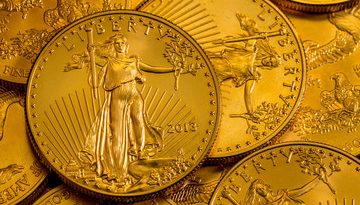
TRUMP SAYS: HUNTER MAKES FORTUNE FROM SHADY DEALS!
BIDEN FAMILY STINKS TO HIGH HEAVENS OF CORRUPTION!
DON'T GET LEFT OUT: HUNTER MUST BE STOPPED!

This article was originally published by Tyler Durden at ZeroHedge.
It may not be the off-the-charts gold buying observed in the second half of 2022, but central bank gold buying made a blistering start to 2023 when according to the latest report from the World Gold Council, demand for the hard currency by the world’s money-printing authorities reached 228 tonnes in Q1, a 176% increase compared to the 82.7 tonnes one year ago.
While lower than the figures seen in the previous two quarters this was nonetheless the strongest first quarter on record. According to the WGC, “This is all the more impressive considering it follows the record-breaking pace of demand last year.”
The rolling four-quarter total soared to a record 1,224 tonnes in Q1 following massive buying in recent quarters. As with the figures for both Q3 and Q4 2022, data for the current quarter contains a significant estimate for unreported activity.
Four central banks accounted for the majority of reported purchasing during Q1:
A significant update during Q1 came from the Central Bank of Russia in a resumption of its reporting of gold reserves, backfilling data from the end of January 2022 to date.
We can now see that in Q1 Russia’s official gold reserves fell by 6t, to 2,327t (25% of total reserves). However, even with this decline – possibly related to coin-minting – the country’s gold reserves are 28t higher than when it stopped reporting last year.
Selling was again much more modest by comparison. The Central Bank of Uzbekistan (-15t) and the National Bank of Kazakhstan (-20t) were the largest sellers of gold during the quarter. According to the WGC, it is not uncommon for central banks that purchase gold from domestic sources – as both Uzbekistan and Kazakhstan do – to be frequent sellers of gold. Cambodia (-10t), UAE (-1t) and Tajikistan (-1t) were the other notable sellers. Croatia reported a 2t reduction in its gold holdings in January but this was a transfer to the European Central Bank – which is required of all countries joining the euro area – and, as such, it does not represent a decline in the global universe of official sector gold.
Here is a chart summarizing the most notable central bank transactions during Q1.
The bottom line: expectations for strong central bank demand in 2023 have been borne out. Central bank buying remains robust, with little to indicate that this will change in the short term. As such, purchases will likely continue to outweigh sales for the foreseeable future and may explain in part why gold trades just shy of its all-time high north of $2,000 per ounce. But the exact pace of this net buying is difficult to determine.

It Took 22 Years to Get to This Point
Two domestic cats have died after drinking raw milk recalled for bird flu risk in California. A...
This article was originally published by Rhoda Wilson at The Exposé. We have all become familiar...
Conservative political commentator Tucker Carlson took part in a wide-ranging interview that was...
Commenting Policy:
Some comments on this web site are automatically moderated through our Spam protection systems. Please be patient if your comment isn’t immediately available. We’re not trying to censor you, the system just wants to make sure you’re not a robot posting random spam.
This website thrives because of its community. While we support lively debates and understand that people get excited, frustrated or angry at times, we ask that the conversation remain civil. Racism, to include any religious affiliation, will not be tolerated on this site, including the disparagement of people in the comments section.


Comments